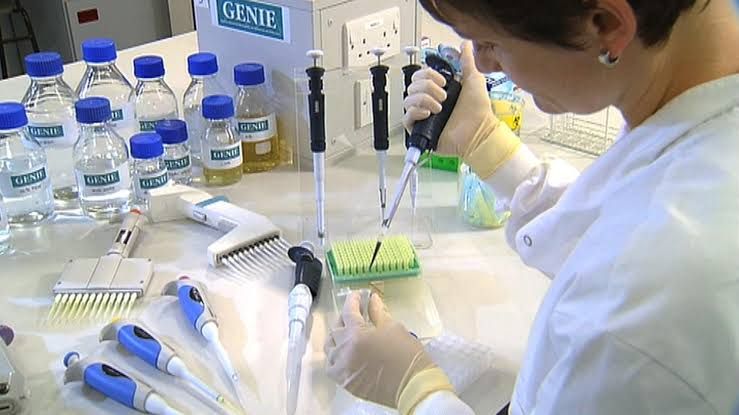
The extraction of human DNA from buccal cells using Chelex™ and the determination of genotype at the D1S80 VNTR locus involves several key steps: sample collection, DNA extraction, PCR amplification, and analysis of the PCR products.
Sample Collection
- Buccal Swab Collection:
- Collect buccal epithelial cells by using a sterile swab to rub the inside of the cheek. This method is non-invasive and provides a sufficient quantity of cells for DNA extraction.
- Ensure that participants have not eaten or drunk anything for at least 30 minutes prior to collection to avoid contamination.
- Storage:
- The collected swabs can be stored in a dry environment until ready for processing. It is recommended to process samples as soon as possible to ensure high-quality DNA extraction.
DNA Extraction Using Chelex™
- Preparation of Chelex™ Solution:
- Prepare a 5% (w/v) solution of Chelex™ resin in distilled water. This resin will help to lyse cells and bind divalent metal ions that could inhibit downstream applications.
- Cell Lysis:
- Place the buccal swab into a microcentrifuge tube containing 200 µL of the prepared Chelex™ solution.
- Vortex the tube briefly to mix and then incubate it at 56°C for about 30 minutes to allow cell lysis.
- After incubation, heat the mixture at 100°C for an additional 8-10 minutes to further lyse cells and release DNA into the solution.
- Centrifugation:
- Centrifuge the tube at maximum speed (e.g., 12,000 x g) for about 5 minutes. This step separates the Chelex™ beads from the supernatant containing extracted DNA.
- Carefully transfer the supernatant (which contains the DNA) into a new microcentrifuge tube without disturbing the Chelex™ pellet.
- Storage:
- Store extracted DNA at -20°C for long-term storage or use immediately for PCR amplification.
PCR Amplification of D1S80 VNTR Locus
- PCR Reaction Setup:
- Prepare a PCR reaction mixture containing:
- Extracted DNA (typically around 1-5 µL)
- PCR buffer
- dNTPs (deoxynucleotide triphosphates)
- Forward and reverse primers specific for the D1S80 locus
- Taq polymerase enzyme
- Distilled water to bring up to final volume (usually 25-50 µL).
- Prepare a PCR reaction mixture containing:
- D1S80 Primers:
- Use specific primers designed for amplifying the D1S80 VNTR locus, which typically has a core repeat unit length of 16 bp.
- Thermal Cycling Conditions:
- Set up thermal cycling conditions which generally include:
- Initial denaturation at 95°C for 5 minutes
- Denaturation at 95°C for 30 seconds
- Annealing temperature (specific to primer design, often around 60°C) for 30 seconds
- Extension at 72°C for approximately 30 seconds per cycle
- Repeat this cycle for about 25-35 cycles depending on desired yield.
- Final extension step at 72°C for about 10 minutes.
- Set up thermal cycling conditions which generally include:
Analysis of PCR Products
- Agarose Gel Electrophoresis:
- Prepare an agarose gel (typically around 2%) with an appropriate buffer (like TAE or TBE).
- Load PCR products along with a molecular weight ladder onto the gel.
- Run electrophoresis under appropriate voltage conditions until bands are adequately separated.
- Visualization:
- Stain gel with an intercalating dye such as ethidium bromide or SYBR Safe.
- Visualize bands under UV light; compare band sizes against molecular weight markers to determine allele sizes corresponding to different repeat numbers at the D1S80 locus.
- Genotype Determination:
- Analyze band patterns; individuals may show homozygosity (one band) or heterozygosity (two distinct bands).
- Calculate repeat numbers based on fragment sizes obtained from comparison with known standards.
- Interpretation:
- Use allele frequency data from population studies if necessary, as allele distribution can vary among different ethnic groups.
By following these steps meticulously, researchers can successfully extract human DNA from buccal cells using Chelex™, amplify specific regions like D1S80 VNTR through PCR, and analyze genetic variations effectively.







